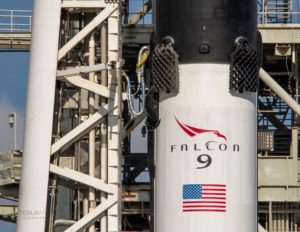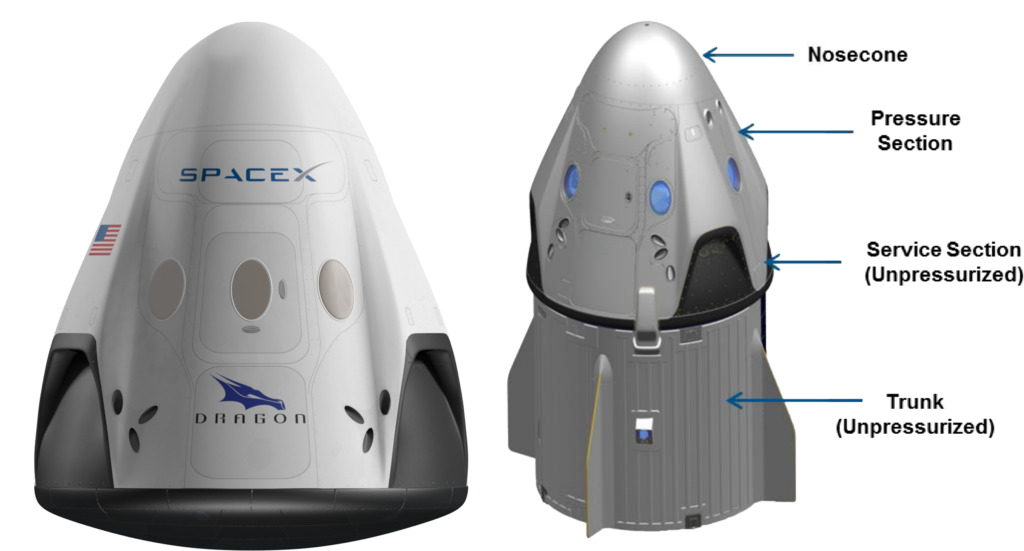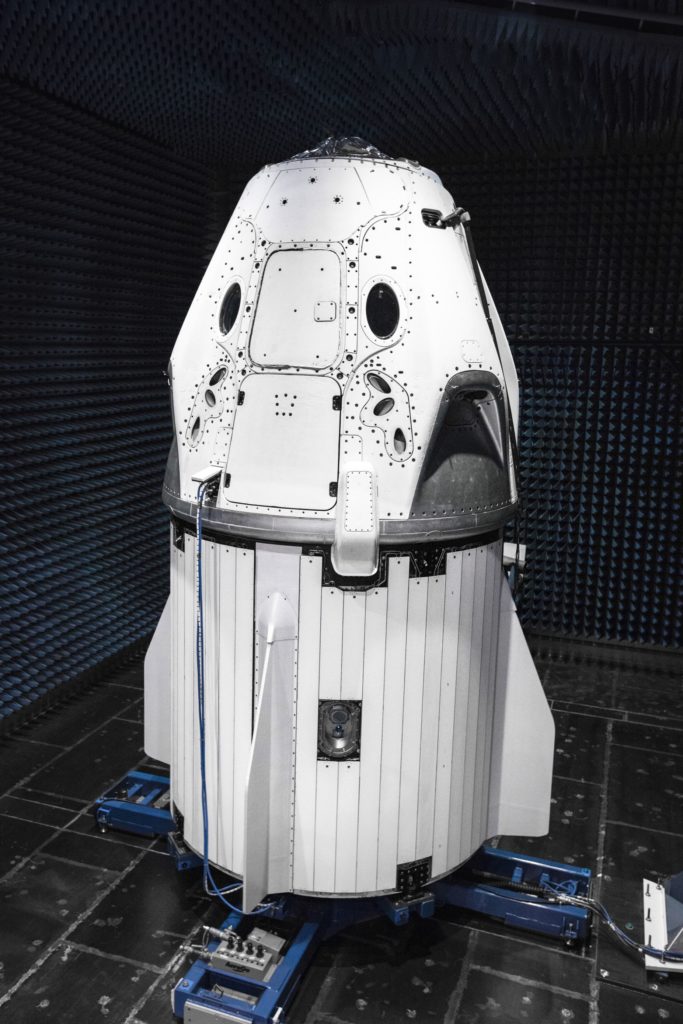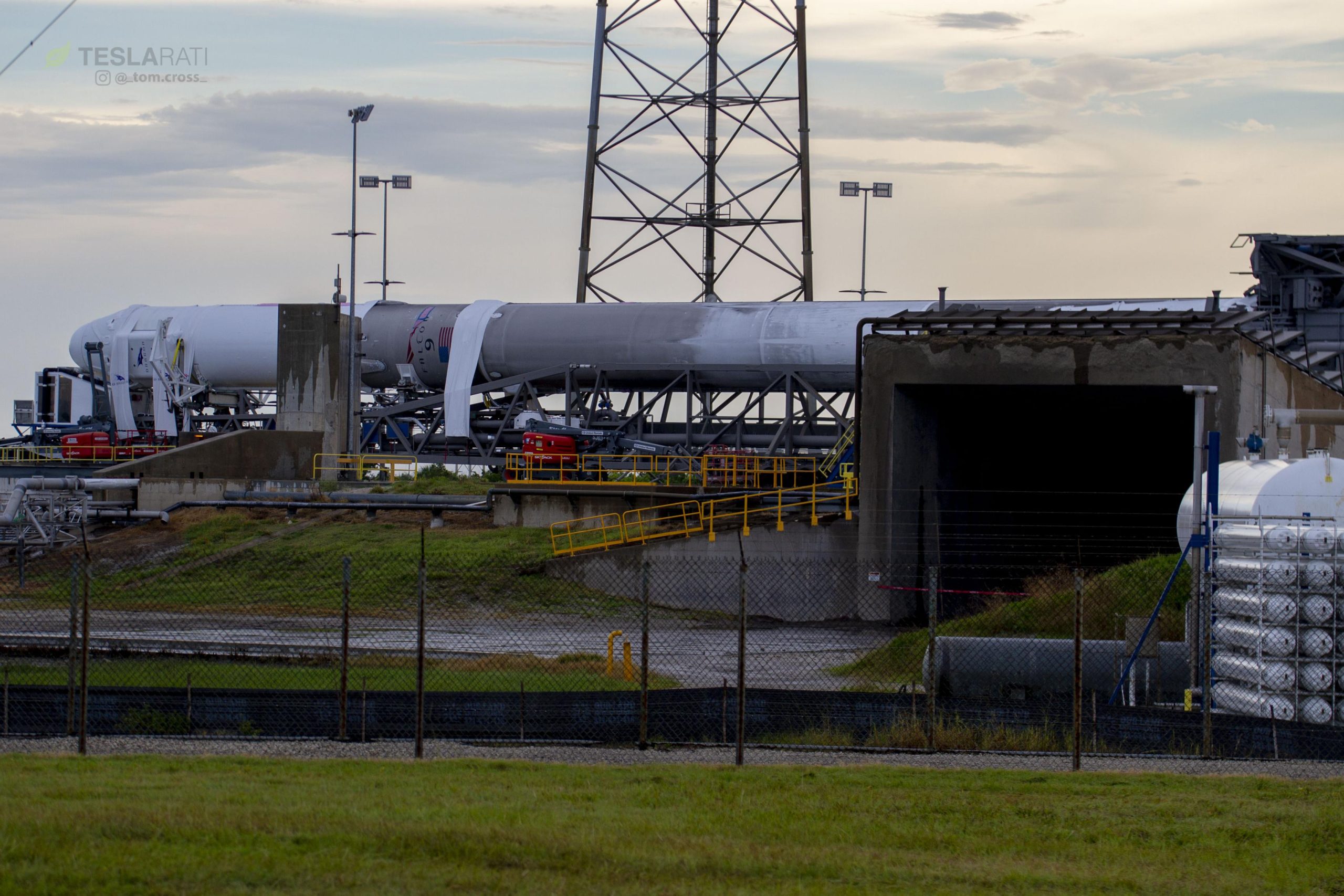
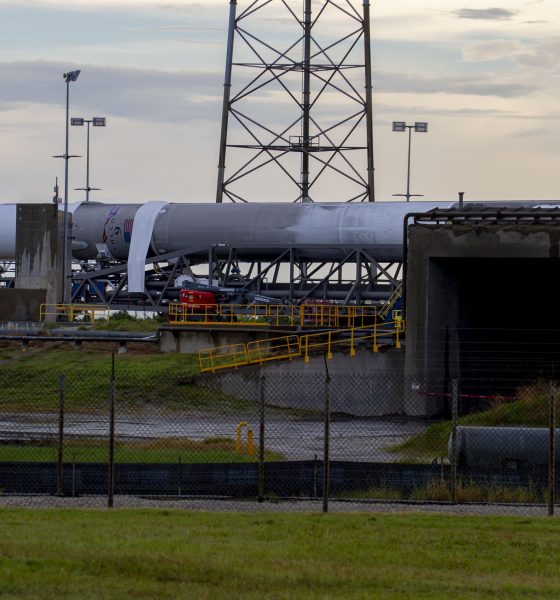
News
SpaceX to test last old-gen Falcon 9’s orbital upper stage lifespan tonight
SpaceX Falcon 9 B1045 is just hours away from completing its second and final mission, a launch that will also signify a swan-song for the reusable rocket company’s Block 4 and older boosters. Not one to let an opportunity go to waste, Elon Musk’s space company intends to do a long coast demonstration of the orbital upper stage once the reused Cargo Dragon spacecraft separates.
Jessica Jensen, SpaceX’s Director of Dragon Mission Management, spoke among a panel of CRS-15 stakeholders on the morning of June 28 and spoke evident pride and confidence in the company’s progress up to this point, with respect to both the mission at hand and SpaceX’s achievements more generally. CRS-15, the third flight-proven Dragon and Falcon 9 launch, is a fitting mission for SpaceX to bring to a close their H1 launch manifest (the 12th of 2018), mainly due to the impressive fact that more than two-thirds of the boosters launched this year have been flight-proven.

Falcon 9 B1045 before its first launch, carrying NASA’s TESS exoplanet observatory, in April 2018. (Tom Cross)
As Jensen rightfully noted, SpaceX completed its first-ever reuse of a recovered Falcon 9 booster scarcely 15 months ago in March 2017, a period in which SpaceX has since completed 26 missions, recovered 16 Falcon 9 and Heavy boosters, and successfully launched 12 flight-proven rocket boosters. At the current rate of launch, SpaceX is likely to smash its previous annual cadence record – 18 in 2017 – with anywhere from 24 to 28 launches this year, with CRS-15 marking a dozen missions in the first half of the year, if successful. As such, simply the launch frequency in the first six months would bring SpaceX to 24 completed missions this year. A slight uptick, perhaps as a result of the rapid reusability of new Block 5 boosters, might allow SpaceX to squeeze in several additional missions.
Critically, Jensen also noted that B1045’s final launch will be significant for a reason other than the fact that it nearly halved the previous record for Falcon 9 booster refurbishment, an accomplishment she ceded to the skill and growing experience of SpaceX’s rocket refurbishment teams of engineers and technicians. Aside from that growing expertise, she stated that
“[CRS-15] will also be the final Block 4 configuration of a Falcon 9 booster that SpaceX flies, so all the boosters from here on out will be the Block 5 version.”
Barring unforeseen design flaws, Falcon 9 Block 5 has the potential to be a game-changer, perhaps allowing SpaceX to finally realize a long-term goal of dramatically lowering the cost of access to orbit with new reliable, reusable rockets. Reported by NASASpaceflight.com to be flying aboard a Block 4 booster, something also confirmed to Teslarati through a separate source, it’s not 100% clear if Jensen’s blanket statement included the upcoming in-flight Crew Dragon abort test, scheduled sometime after the upgraded Dragon’s first launch in late 2018. Regardless, she is fully correct in the sense that all future commercial SpaceX launches after CRS-15 will quite definitively fly aboard Falcon 9 and Heavy Block 5 rockets.
- The first Block 5 Falcon 9 lifts off on May 4, 2018. (Tom Cross)
- After CRS-15, all orbital launches will be use Block 5 boosters and upper stages. The upgraded rocket’s next launch is NET July 20. (Tom Cross)
Flight-proven Cargo Dragons a new norm for SpaceX
Meanwhile, the specifics of CRS-15 mirror SpaceX’s two most recent International Space Station resupply missions, both of which simultaneously flew flight-proven orbital Cargo Dragon spacecraft and flight-proven Falcon 9 boosters, leaving just the second stage and Cargo Dragon trunk to be expended. As a taste of the future SpaceX fully intends to realize, the spectacle of these CRS missions is not only undeniable but demonstrates a newfound confidence in commercial reusable rockets growing within NASA, an agency that SpaceX would quite simply not be here today without.
https://twitter.com/_TomCross_/status/1012490324646748163
After CRS-15, SpaceX has another five flight-proven Cargo Dragon missions left on their CRS-1 contract, after which the updated CRS-2 contract will take over, replacing the old Cargo Dragon with an upgraded cargo version of SpaceX Crew Dragon, also known as Dragon 2. CRS-2 launches are currently scheduled to begin sometime in 2020.
Finally, reminiscent of Falcon Heavy’s spectacular debut launch, Falcon 9’s upper stage “will be doing a long coast demonstration [after Cargo Dragon separates from the rocket]”. Jensen was unable to go into more detail here, but it can be safely presumed that the S2 coast test is either related testing for upper stage reusability or is being used as an opportunity to further demonstrate on-orbit coast capabilities to the US Air Force and/or NASA, a feature that is necessary for certain national security and interplanetary missions.
- An overview of Crew Dragon’s main features, all of which can be seen in the real-life photos. The Cargo Dragon version will likely remove seats and windows. (SpaceX)
- The DM-1 Crew Dragon testing inside SpaceX’s anechoic chamber, May 2018. (SpaceX)
- SpaceX’s Demo Mission-1 Crew Dragon seen preparing for vacuum tests at a NASA-run facility, June 2018. (SpaceX)
Follow us for live updates, peeks behind the scenes, and photos from Teslarati’s East and West Coast photographers.
Teslarati – Instagram – Twitter
Tom Cross – Twitter
Pauline Acalin – Twitter
Eric Ralph – Twitter

News
Tesla starts showing how FSD will change lives in Europe
Local officials tested the system on narrow country roads and were impressed by FSD’s smooth, human-like driving, with some calling the service a game-changer for everyday life in areas that are far from urban centers.

Tesla has launched Europe’s first public shuttle service using Full Self-Driving (Supervised) in the rural Eifelkreis Bitburg-Prüm region of Germany, demonstrating how the technology can restore independence and mobility for people who struggle with limited transport options.
Local officials tested the system on narrow country roads and were impressed by FSD’s smooth, human-like driving, with some calling the service a game-changer for everyday life in areas that are far from urban centers.
Officials see real impact on rural residents
Arzfeld Mayor Johannes Kuhl and District Administrator Andreas Kruppert personally tested the Tesla shuttle service. This allowed them to see just how well FSD navigated winding lanes and rural roads confidently. Kruppert said, “Autonomous driving sounds like science fiction to many, but we simply see here that it works totally well in rural regions too.” Kuhl, for his part, also noted that FSD “feels like a very experienced driver.”
The pilot complements the area’s “Citizen Bus” program, which provides on-demand rides for elderly residents who can no longer drive themselves. Tesla Europe shared a video of a demonstration of the service, highlighting how FSD gives people their freedom back, even in places where public transport is not as prevalent.
What the Ministry for Economic Affairs and Transport says
Rhineland-Palatinate’s Minister Daniela Schmitt supported the project, praising the collaboration that made this “first of its kind in Europe” possible. As per the ministry, the rural rollout for the service shows FSD’s potential beyond major cities, and it delivers tangible benefits like grocery runs, doctor visits, and social connections for isolated residents.
“Reliable and flexible mobility is especially vital in rural areas. With the launch of a shuttle service using self-driving vehicles (FSD supervised) by Tesla in the Eifelkreis Bitburg-Prüm, an innovative pilot project is now getting underway that complements local community bus services. It is the first project of its kind in Europe.
“The result is a real gain for rural mobility: greater accessibility, more flexibility and tangible benefits for everyday life. A strong signal for innovation, cooperation and future-oriented mobility beyond urban centers,” the ministry wrote in a LinkedIn post.
News
Tesla China quietly posts Robotaxi-related job listing
Tesla China is currently seeking a Low Voltage Electrical Engineer to work on circuit board design for the company’s autonomous vehicles.

Tesla has posted a new job listing in Shanghai explicitly tied to its Robotaxi program, fueling speculation that the company is preparing to launch its dedicated autonomous ride-hailing service in China.
As noted in the listing, Tesla China is currently seeking a Low Voltage Electrical Engineer to work on circuit board design for the company’s autonomous vehicles.
Robotaxi-specific role
The listing, which was shared on social media platform X by industry watcher @tslaming, suggested that Tesla China is looking to fill the role urgently. The job listing itself specifically mentions that the person hired for the role will be working on the Low Voltage Hardware team, which would design the circuit boards that would serve as the nervous system of the Robotaxi.
Key tasks for the role, as indicated in the job listing, include collaboration with PCB layout, firmware, mechanical, program management, and validation teams, among other responsibilities. The role is based in Shanghai.
China Robotaxi launch
China represents a massive potential market for robotaxis, with its dense urban centers and supportive policies in select cities. Tesla has limited permission to roll out FSD in the country, though despite this, its vehicles have been hailed as among the best in the market when it comes to autonomous features. So far, at least, it appears that China supports Tesla’s FSD and Robotaxi rollout.
This was hinted at in November, when Tesla brought the Cybercab to the 8th China International Import Expo (CIIE) in Shanghai, marking the first time that the autonomous two-seater was brought to the Asia-Pacific region. The vehicle, despite not having a release date in China, received a significant amount of interest among the event’s attendees.
Elon Musk
Elon Musk and Tesla AI Director share insights after empty driver seat Robotaxi rides
The executives’ unoccupied tests hint at the rapid progress of Tesla’s unsupervised Robotaxi efforts.

Tesla CEO Elon Musk and AI Director Ashok Elluswamy celebrated Christmas Eve by sharing personal experiences with Robotaxi vehicles that had no safety monitor or occupant in the driver’s seat. Musk described the system’s “perfect driving” around Austin, while Elluswamy posted video from the back seat, calling it “an amazing experience.”
The executives’ unoccupied tests hint at the rapid progress of Tesla’s unsupervised Robotaxi efforts.
Elon and Ashok’s firsthand Robotaxi insights
Prior to Musk and the Tesla AI Director’s posts, sightings of unmanned Teslas navigating public roads were widely shared on social media. One such vehicle was spotted in Austin, Texas, which Elon Musk acknowleged by stating that “Testing is underway with no occupants in the car.”
Based on his Christmas Eve post, Musk seemed to have tested an unmanned Tesla himself. “A Tesla with no safety monitor in the car and me sitting in the passenger seat took me all around Austin on Sunday with perfect driving,” Musk wrote in his post.
Elluswamy responded with a 2-minute video showing himself in the rear of an unmanned Tesla. The video featured the vehicle’s empty front seats, as well as its smooth handling through real-world traffic. He captioned his video with the words, “It’s an amazing experience!”
Towards Unsupervised operations
During an xAI Hackathon earlier this month, Elon Musk mentioned that Tesla owed be removing Safety Monitors from its Robotaxis in Austin in just three weeks. “Unsupervised is pretty much solved at this point. So there will be Tesla Robotaxis operating in Austin with no one in them. Not even anyone in the passenger seat in about three weeks,” he said. Musk echoed similar estimates at the 2025 Annual Shareholder Meeting and the Q3 2025 earnings call.
Considering the insights that were posted Musk and Elluswamy, it does appear that Tesla is working hard towards operating its Robotaxis with no safety monitors. This is quite impressive considering that the service was launched just earlier this year.


